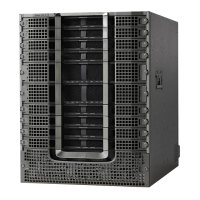•
Significantly improve SNMP polling performance for supported MIB tables, and reduce the CPU
utilization in both Supervisor and line card.
The following MIB tables are supported in SNMP background synchronization:
•
docsQosParamSetEntry
•
docsIetfQosParamSetEntry
•
docsQos3ParamSetEntry
•
docsIf3CmtsCmUsStatusEntry
•
docsIfCmtsCmStatusEntry
•
docsSubMgtCpeControlEntry
•
docsSubMgtCmFilterEntry
•
cdxCmtsCmStatusExtEntry
•
docsLoadBalCmtsCmStatusEntry
•
docsIf3CmtsCmRegStatusTable
•
docsIfSignalQualityTable
•
docsifCmtsServiceTable
•
cdxCmtsServiceExtEntry
How to Configure SNMP Background Synchronization
Enabling SNMP Background Synchronization
Before you begin
To use the cable bgsync command, you must configure the service internal command in global configuration
mode.
SNMP background synchronization is enabled by default, use no cable bgsync active to disable this feature,
and use cable bgsync active to enable it again. The following procedure lists detailed steps to enable SNMP
background synchronization:
enable
configure terminal
cable bgsync active
exit
Setting Data Interval
Before you begin
To use the cable bgsync command, you must configure the service internal command in global configuration
mode. Use the cable bgsync command carefully as it can impact the CPU utilization.
Cisco cBR Series Converged Broadband Routers Troubleshooting and Network Management Configuration
Guide for Cisco IOS XE Fuji 16.8.x
228
SNMP Background Synchronization
How to Configure SNMP Background Synchronization

